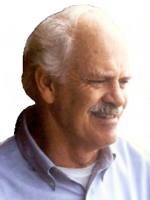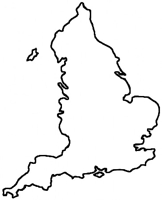
|
The Society of Folk Dance Historians (SFDH)
English Country Dancing
[
Home |
About |
Encyclopedia | CLICK AN IMAGE TO ENLARGE |

|
 English country dances came to notice in the late 1500s as group dances performed at court and in sophisticated, private gatherings. The first publication was in 1651 when John Playford gathered up more than a hundred country dances then currently popular in London society. They were in a number of forms: rounds, squares, two- and three-couple, and longways sets; some were very simple, such as Rufty Tufty, others more complex, such as Chelsea Ranch. By 1690, when an eighth edition of his hugely popular book, called "The Dancing Master," appeared, most of the old dances had been dropped in favor of a longways progressive formation in which couples stand in parallel lines, men in one line facing their partners in the other. This formation persists today in traditional and contra dances.
English country dances came to notice in the late 1500s as group dances performed at court and in sophisticated, private gatherings. The first publication was in 1651 when John Playford gathered up more than a hundred country dances then currently popular in London society. They were in a number of forms: rounds, squares, two- and three-couple, and longways sets; some were very simple, such as Rufty Tufty, others more complex, such as Chelsea Ranch. By 1690, when an eighth edition of his hugely popular book, called "The Dancing Master," appeared, most of the old dances had been dropped in favor of a longways progressive formation in which couples stand in parallel lines, men in one line facing their partners in the other. This formation persists today in traditional and contra dances.
Longways country dances are preformed in small groups within a larger set, the first couple in each "minor" set leading the figures. The dance has six or eight figures, such as back-to-back, hand turn, circle or lead through, that are arranged to fit the music and move the leading couple down one place. Each time the dance is repeated, the leading couple performs the figures again with a new subgroup in the set. The popularity of country dancing hinges on the repetitious nature of the figures and its flexibility. In the 17th and 18th centuries, steps were chosen by the leading couple to suit the company. The specific dance also was chosen for the occasion – those with more complex figures for elite dancers in public assemblies, simpler ones for dancers in barns and taverns.
Country dances served as an important cultural vehicle in British, European, and New World social settings between 1660 and 1800. Over this period, old court-oriented societies were replaced by materialistic middle-class people who displayed gentility and manners on the dance floor as badges of achievement. Country dances faded from view in the early 19th century as behavior and appearance ceased to be a defining social standard.
ENGLISH COUNTRY DANCING TODAY
English country dances flourish again today as a living tradition. In the 19th century, once it was acceptable to hold your partner in your arms in polite company, the Waltz and Polka took over the ballrooms. Dancing was no longer something just to look at and admire, but something to enjoy physically, regardless of who was watching. But country dances persisted among country folk and were taught by rural dancing masters long enough to be remembered by older generations when Cecil J. Sharp learned about them in the early 1900s. He collected and published a number and then sought their history in libraries. He interpreted old dance terms that had long gone out of use and took the lead in bringing English country dances back into vogue.
Since that time, modern dancing masters have created many new dances within the country dance form to fit the social mores of their day. Today, on both sides of the Atlantic Ocean, many follow Sharp's lead, seeking out and interpreting interesting old dances published by Playford, Bray, Walsh, Neal, and the Thompson family. Some are creating new material in the old forms, and others, such as Pat Shaw, have composed dances that synthesize traditional English, Scottish, and American idioms.
The earliest country dances were danced with Renaissance steps such as single, double, and perhaps some steps from the showy Galliard. In the 18th century, elite dancers adopted French steps such as Pas de Bourrée, Minuet, Contratemps, Rigadoon, and Balance. Today, most country dances are performed with a smooth dance-walk, bouncy step, and occasional slipping steps or skipping.
MUSIC
Country dances are comprised to popular tunes of all kinds: old ballad tunes, marches and arias by Purcell and Handel, elegant dances from the theater, and joyful fiddle tunes from the countryside. English country dances are tied to their tunes and the same tune is played throughout the dance. Tunes usually comprise two or three repeated eight bar phrases in duple or triple meter. Present tastes in the United States lean toward triple meter tunes, and many new and old dances in triple time are found on ball and class programs.
Although it is impossible to define a typical country dance tune, some qualities can be observed. Smooth melodic motion, distinct cadences, and harmonic and rhythmic drive are present in the most satisfying tunes. Because each phrase is usually repeated, full modulations are seldom present, although tunes in AABA form often do modulate in the B strain, setting up a dramatic return to A, as in La Belle Catherine.
Instruments to accompany early country dancing varied from a pipe and tabor (a portable snare drum typically played with one hand by one person) to a full orchestra plus pipe organ, as found at assemblies in 18th century Bath. Over the years, the fiddle was probably the most commonly used instrument. Today, dances are usually accompanied by combinations of three or four instruments, such as concertina, fiddle, flute, piano, accordion, harp, cello, and many others.
DOCUMENTS
- Country Dance, a dance family.
- England, a country.
- English Country Dance, an article.
- English Steps, Terms, and Styling, an article.
- Mary Neal, a teacher and author.
- Playford Dances, an article.
Used with permission of the author.
Printed in Folk Dance Scene, February 2007.
This page © 2018 by Ron Houston.
Please do not copy any part of this page without including this copyright notice.
Please do not copy small portions out of context.
Please do not copy large portions without permission from Ron Houston.